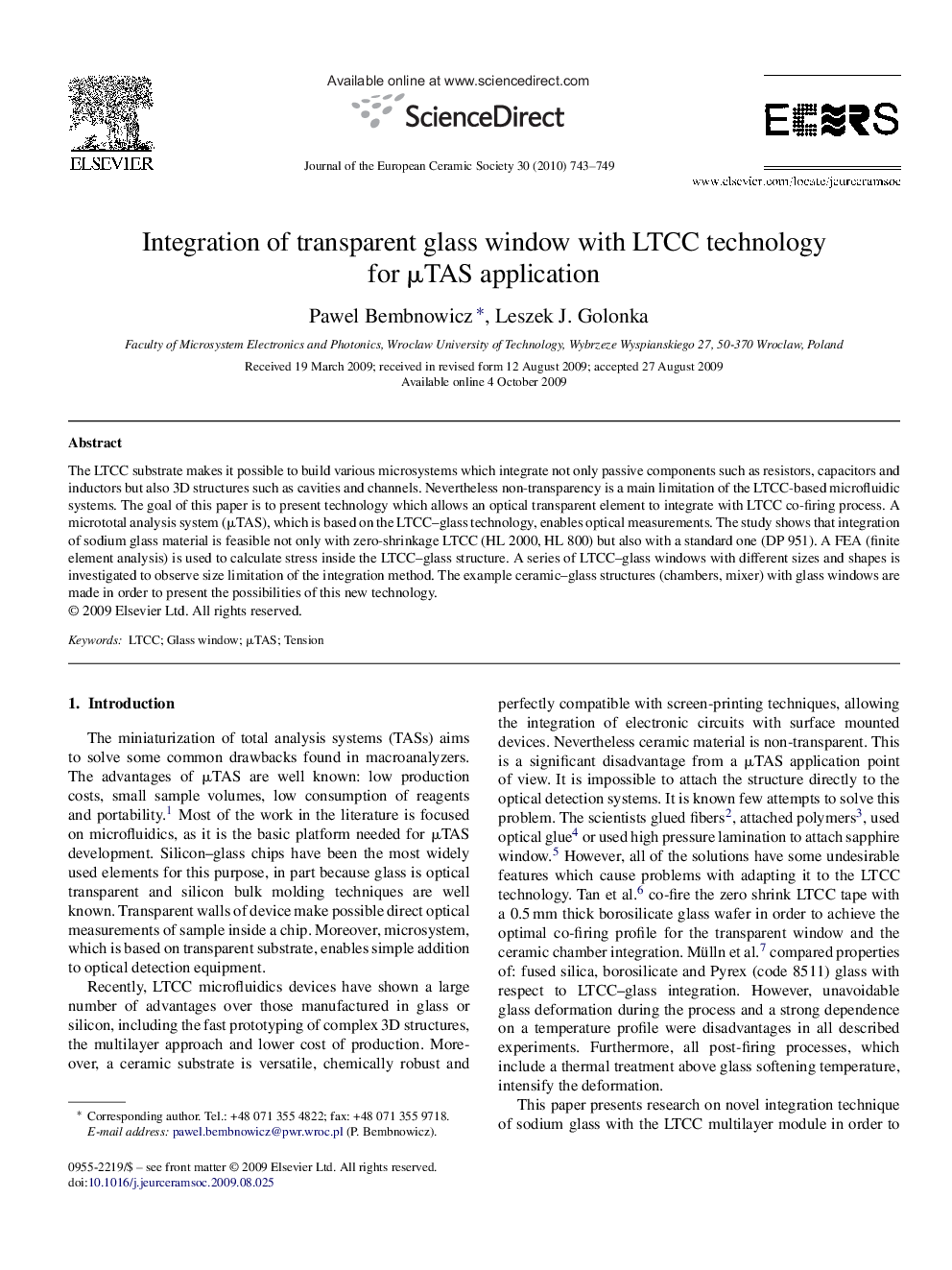| Article ID | Journal | Published Year | Pages | File Type |
|---|---|---|---|---|
| 1474926 | Journal of the European Ceramic Society | 2010 | 7 Pages |
The LTCC substrate makes it possible to build various microsystems which integrate not only passive components such as resistors, capacitors and inductors but also 3D structures such as cavities and channels. Nevertheless non-transparency is a main limitation of the LTCC-based microfluidic systems. The goal of this paper is to present technology which allows an optical transparent element to integrate with LTCC co-firing process. A micrototal analysis system (μTAS), which is based on the LTCC–glass technology, enables optical measurements. The study shows that integration of sodium glass material is feasible not only with zero-shrinkage LTCC (HL 2000, HL 800) but also with a standard one (DP 951). A FEA (finite element analysis) is used to calculate stress inside the LTCC–glass structure. A series of LTCC–glass windows with different sizes and shapes is investigated to observe size limitation of the integration method. The example ceramic–glass structures (chambers, mixer) with glass windows are made in order to present the possibilities of this new technology.
